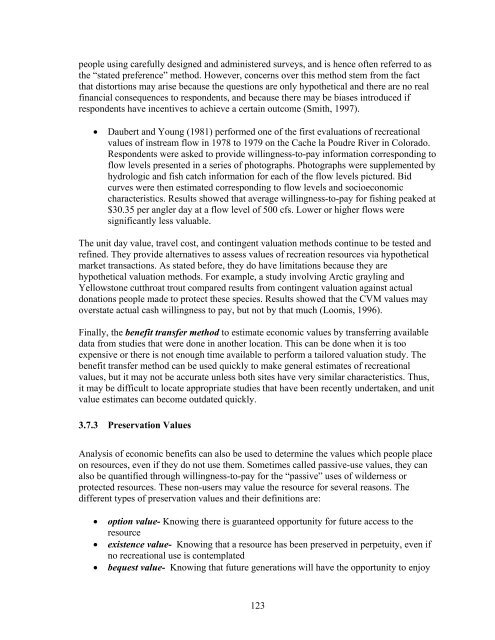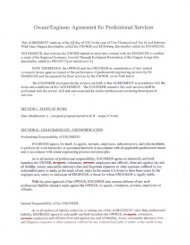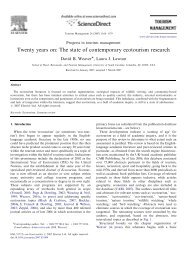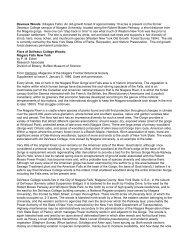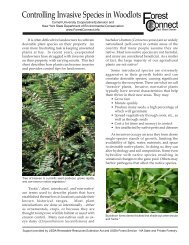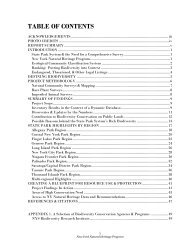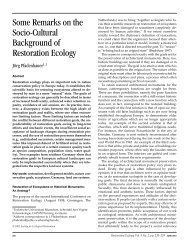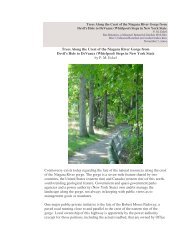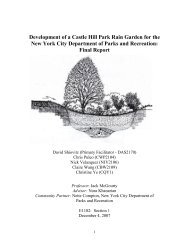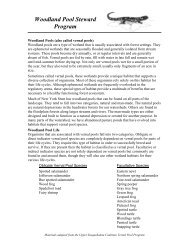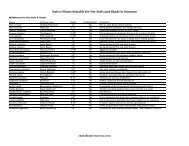Economic Impacts of Parks, Rivers, Trails and Greenways
Economic Impacts of Parks, Rivers, Trails and Greenways
Economic Impacts of Parks, Rivers, Trails and Greenways
You also want an ePaper? Increase the reach of your titles
YUMPU automatically turns print PDFs into web optimized ePapers that Google loves.
people using carefully designed <strong>and</strong> administered surveys, <strong>and</strong> is hence <strong>of</strong>ten referred to asthe “stated preference” method. However, concerns over this method stem from the factthat distortions may arise because the questions are only hypothetical <strong>and</strong> there are no realfinancial consequences to respondents, <strong>and</strong> because there may be biases introduced ifrespondents have incentives to achieve a certain outcome (Smith, 1997).Daubert <strong>and</strong> Young (1981) performed one <strong>of</strong> the first evaluations <strong>of</strong> recreationalvalues <strong>of</strong> instream flow in 1978 to 1979 on the Cache la Poudre River in Colorado.Respondents were asked to provide willingness-to-pay information corresponding t<strong>of</strong>low levels presented in a series <strong>of</strong> photographs. Photographs were supplemented byhydrologic <strong>and</strong> fish catch information for each <strong>of</strong> the flow levels pictured. Bidcurves were then estimated corresponding to flow levels <strong>and</strong> socioeconomiccharacteristics. Results showed that average willingness-to-pay for fishing peaked at$30.35 per angler day at a flow level <strong>of</strong> 500 cfs. Lower or higher flows weresignificantly less valuable.The unit day value, travel cost, <strong>and</strong> contingent valuation methods continue to be tested <strong>and</strong>refined. They provide alternatives to assess values <strong>of</strong> recreation resources via hypotheticalmarket transactions. As stated before, they do have limitations because they arehypothetical valuation methods. For example, a study involving Arctic grayling <strong>and</strong>Yellowstone cutthroat trout compared results from contingent valuation against actualdonations people made to protect these species. Results showed that the CVM values mayoverstate actual cash willingness to pay, but not by that much (Loomis, 1996).Finally, the benefit transfer method to estimate economic values by transferring availabledata from studies that were done in another location. This can be done when it is tooexpensive or there is not enough time available to perform a tailored valuation study. Thebenefit transfer method can be used quickly to make general estimates <strong>of</strong> recreationalvalues, but it may not be accurate unless both sites have very similar characteristics. Thus,it may be difficult to locate appropriate studies that have been recently undertaken, <strong>and</strong> unitvalue estimates can become outdated quickly.3.7.3 Preservation ValuesAnalysis <strong>of</strong> economic benefits can also be used to determine the values which people placeon resources, even if they do not use them. Sometimes called passive-use values, they canalso be quantified through willingness-to-pay for the “passive” uses <strong>of</strong> wilderness orprotected resources. These non-users may value the resource for several reasons. Thedifferent types <strong>of</strong> preservation values <strong>and</strong> their definitions are:option value- Knowing there is guaranteed opportunity for future access to theresourceexistence value- Knowing that a resource has been preserved in perpetuity, even ifno recreational use is contemplatedbequest value- Knowing that future generations will have the opportunity to enjoy123


